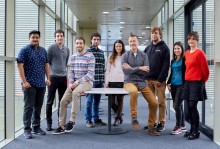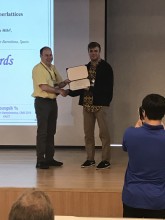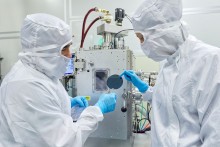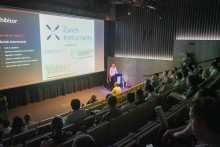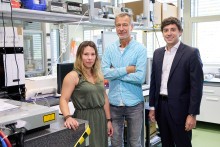Related news by tag Nanoengineering
Summer Internship Program: call open until 5 February

NanoGUNE has just opened the registration period for the Summer Internship Program.
This year, we offer up to 13 projects for university students in the 3rd and 4th year of Physics, Chemistry, Biology, Engineering, and Mathematics. They will have the chance to get a closer look at the activity taking place at a cutting-edge research center for between six weeks and two months during the summer. This experience enables university students to collaborate with nanoGUNE researchers on their research projects in a whole range of fields, such as nanomagnetism, self-assembly, nanobiomechanics, nanodevices, nanomaterials, nanoimaging, and nanoengineering.
All the information about these projects, timetables, pay, etc. can be checked out at: https://www.nanogune.eu/summer-internship
Anyone interested in participated in the selection process needs to send an email attaching his/her academic record and CV to the address provided on the webpage no later than 5 February 2017. The students selected will be asked to attend an interview on 17 or 24 February.
Students from UPV / EHU, Tecnun, UAB and the UB carry out summer internships at CIC nanoGUNE
On Tuesday, 19 June, we welcomed a group of internship students that will carry out a research project at NanoGUNE during the summer. The director of the center, Jose M. Pitarke, received the students with a presentation talk about nanoGUNE, that was also attended by the researchers that will conduct the students’ projects.
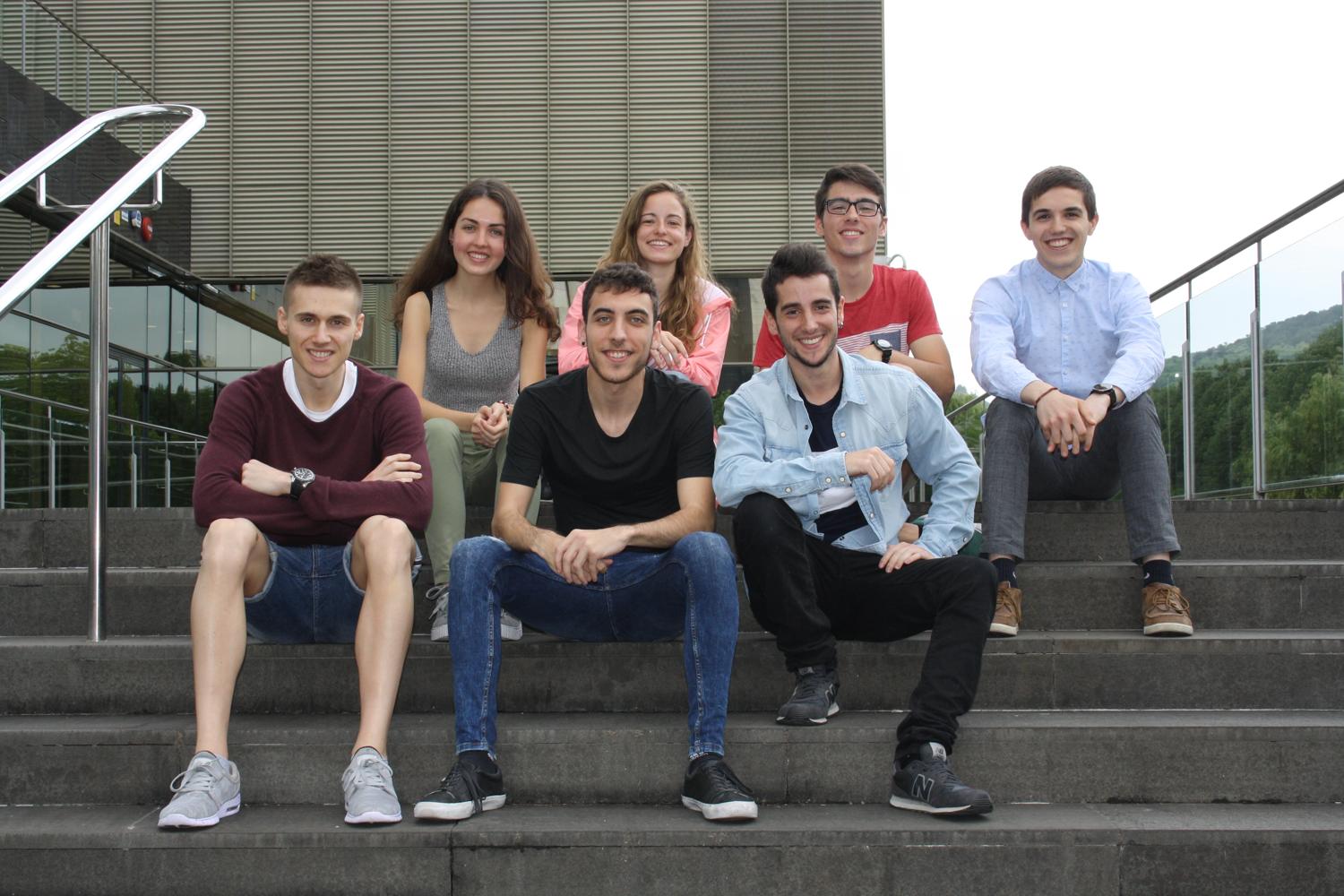
The 11 students come from different universities, among which are, Unibersity of the Basque Country (UPV /EHU), Tecnun, Univeristy of Barcelona (UB), Autonomous University of Barcelona (UAB). This program offers to the students a real experience of work in a research laboratory in order to make it easier for them to take decision about their future professional life.
The students will collaborate and learn with the different research groups at nanoGUNE, such as nanooptics, nanodevices or nanomagnetism. They will carry out a research project for two months following the instructions of a researcher of their group.
Some of them started the internships at the beginning of the month and they have been very involved in the group’s work. "The truth is that we started very suddenly; the very first day they took me to the laboratory," says Amaia Ochandorena, a student of Biochemistry and Molecular Biology at the UPV/EHU.
All the students knew CIC nanoGUNE and stressed that "it is an important research center" and "offers and works with topics of much interest".
For these students, and also for undergraduate students of general, nanoGUNE offers the possibility of collaborating with the center for the completion of final graduate or master thesis projects, for which also opens a call for grants every year.
CIC nanoGUNE showcases its latest technologies in 3D printing and detection systems at Basque Industry 4.0
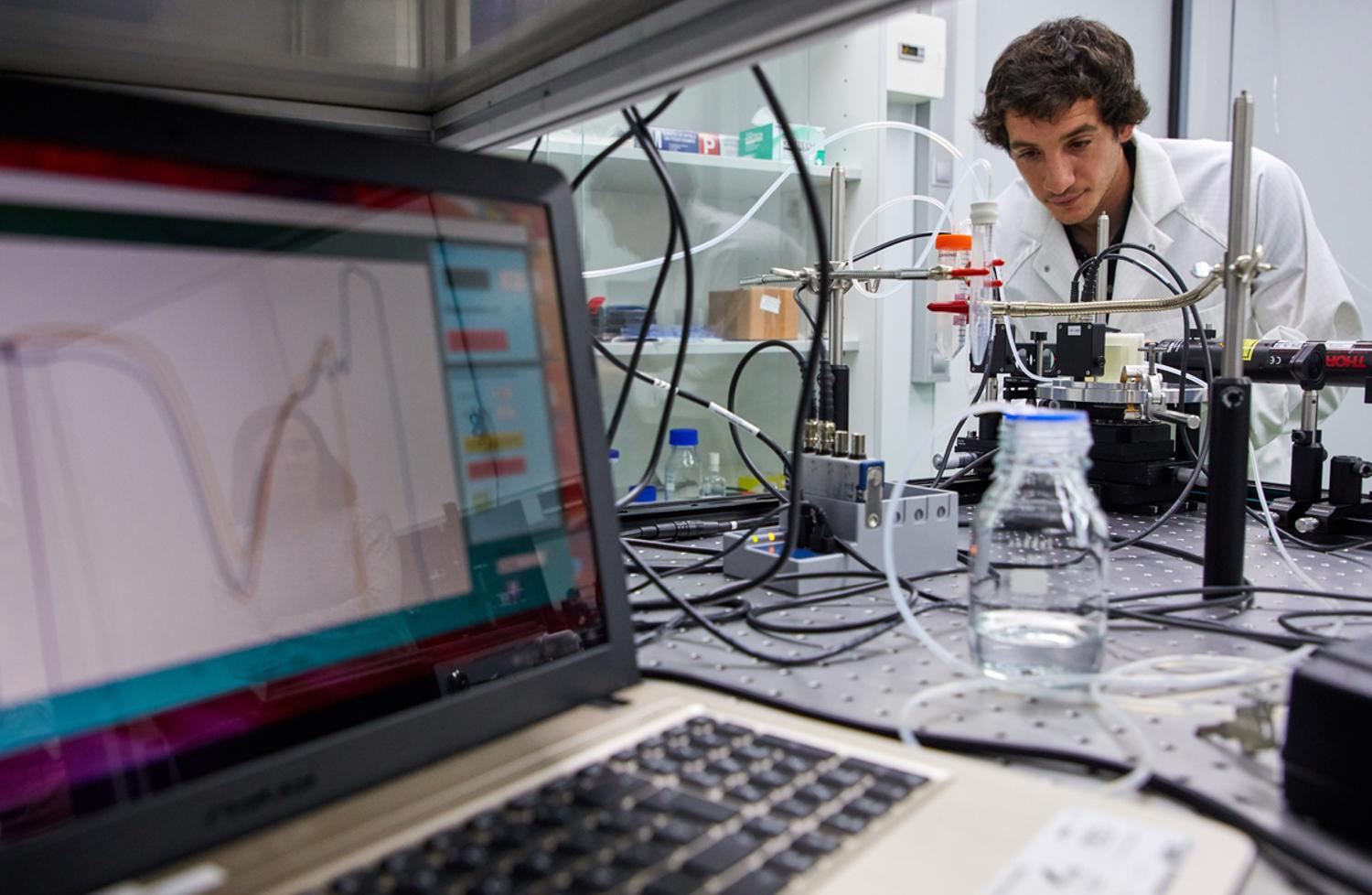
“Nanoscience and nanotechnology are the great architects of true transformations. They are present and will continue that way throughout industry’s value chain. For being competitive in the future, it is highly important for our industry to be at the forefront in this field,” said Ainara Garcia-Gallastegui, head of Technology Transfer at nanoGUNE.
At the event, nanoGUNE is sharing a stand with other members of the Basque Research and Technology Alliance (BRTA), and will be showcasing its latest technologies in 3D printing and detection systems. Firstly, nanoGUNE will demonstrate an innovative technology recently protected through a patent application. It goes by the name of NovaSpider, a 3D printing device capable of creating composite materials by means of nonwoven matrices of randomly oriented nanofibres, tightly linked to a 3D-printed shape, such as a precision-controlled regular network of microfibres.
The application fields of the structures generated by NovaSpider are versatile and promising. Using polymer nanofibres, whose nature, diameter, appearance and morphology can be modulated in a simple and efficient way, the device allows designing composite materials that are robust, light, porous and offer a high specific surface area. Structures of this type arouse huge interest in regenerative medicine, where they are used as scaffolding in tissue regeneration; in the biomedical sector, where they are functionalised and used in controlled drug release and wound protection; and in the energy sector, where their role as a catalytic converter in supercapacitors is being explored.
In turn, it is worth highlighting their application in the textile sector and in packaging, where the idea is to improve the conservation of foodstuffs and to replace plastics by biodegradable materials. To date, the tested sample bank is broad: sugars, proteins, collagen, gelatine, cellulose, etc., thus pointing to the great versatility of the technology. These materials, deposited onto the packaging cardboard, offer a nontoxic and specific barrier bwetween cardboard and foodstuff. The aim is fulfilling the function provided by plastic films until now and substituting them as fully biodegradable coating.
The project is the fruit of the work conducted over the last 6 years by Dr Wiwat Nuansing, an expert in electrospinning, and the engineer Javier Latasa, an expert in mechatronics, among other researchers and technicians in the Self-Assembly Group, led by Dr Alexander Bittner, an Ikerbasque Research Professor at nanoGUNE. The support of experts in the 3D printing industry has enabled the team to meet highest standards and to include the sector’s latest technological developments.
Another strength of nanoGUNE is its expertise in detection and monitoring systems. The Nanoengineering Group, led by Ikerbasque Research Professor Dr Andreas Seifert, demonstrates these capabilities by the early detection of Alzheimer’s disease. Photonic sensing technology in combination with multivariate analysis, developed at nanoGUNE, together with the latest developments in machine deep learning of the Computer Vision Group at Tecnalia within the collaboration framework of Elkartek (Basque Government) presents a clear example of innovation for Industry 4.0. Right now, developments focus on applications in the biohealth sector, such as monitoring of physiological parameters, in particular disorders caused by lack of oxygen, or the indispensable early detection of Alzheimer’s. Moreover, the research addresses the industrial food sector by the development of novel methods for measuring and quantifying food quality, including the presence of microplastics, based on the combination of sensing and detection systems and mathematical learning algorithms.
About Basque Industry 4.0
Basque Industry 4.0. is an event in which knowledge and experiences of all the public, private and corporate players around Industry 4.0 and Cybersecurity are shared. This meeting focusses on TEIC tools to assist in optimizing industrial processes, and on smart tools that provide support for the design, development, production, logistics and integrated manufacturing management. It offers a look into the future of technology and research.
nanoGUNE launches a new summer internship call for university students
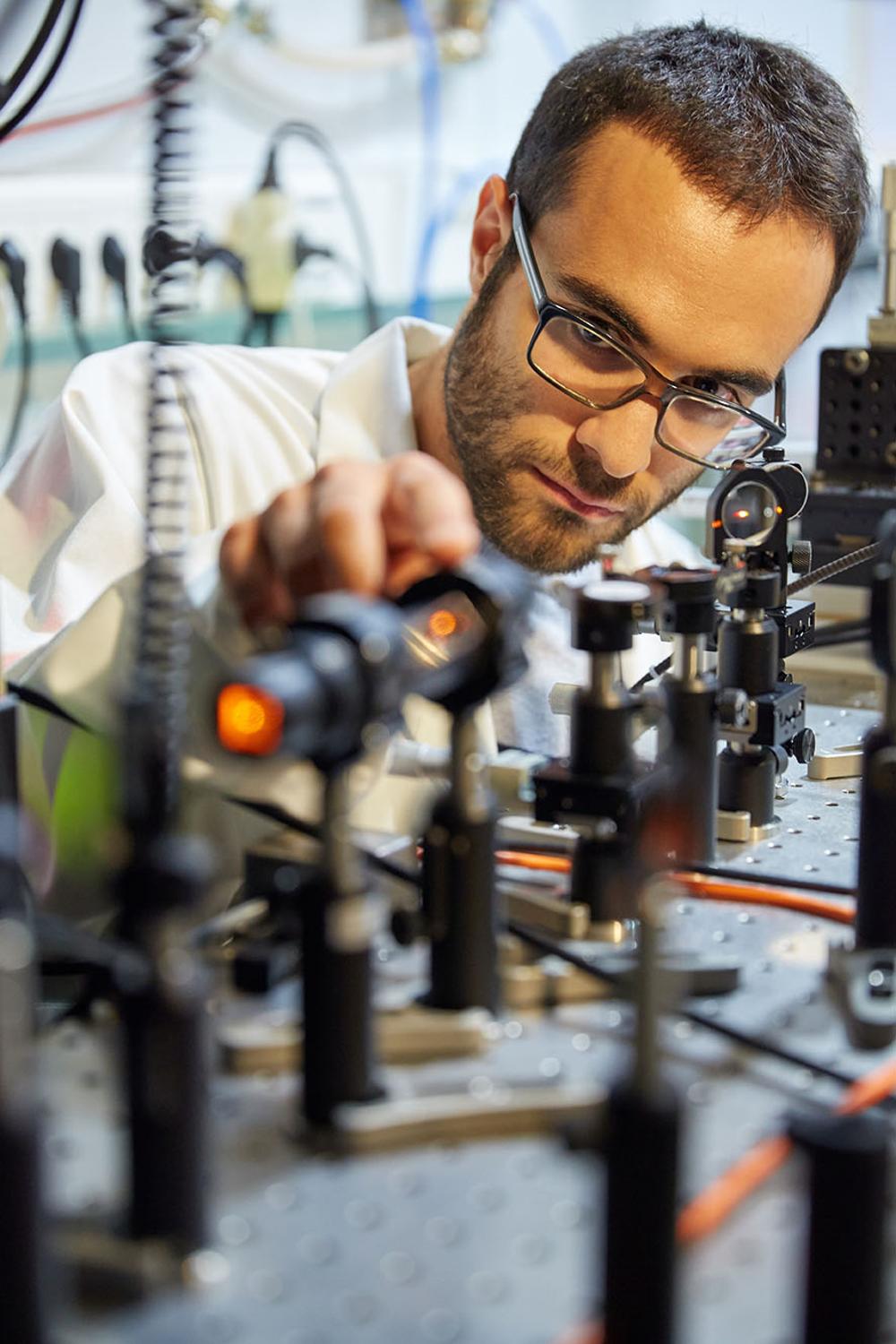
Through this programme the Basque nanoscience research centre will this summer be receiving about ten new students in their 3rd and 4th years of Physics, Chemistry, Biology and Engineering. For a period of six weeks or two months the young students will be collaborating with nanoGUNE researchers in their research projects on subjects such as electron/spin phenomena and magnetism, nanoscale optics, nanoscale materials and nanobioengineering, among others.
To participate in the summer internship programme any students who are interested will need to submit their applications online via the nanoGUNE website, the deadline being 16 February. Full information relating to the call is available via the nanoGUNE website (www.nanogune.eu)
CIC nanoGUNE launches a new disruptive technology that allows for a safer delivery of babies
Worldwide, the number of newborn deaths counts for 4 million, of which 23% are caused by perinatal asphyxia. The decision for cesarean delivery is mostly based on an invasive pH and lactate blood test that is done by fetal blood scalp sampling during delivery. As current method works discontinuously and an excessively high measurement time is required, a considerable number of failures does occur. The rate of cesareans is considerably high, while the number of adverse neonatal outcomes remains unchanged.
Best Paper Award for Mathias Charconnet on the International Conference on Optical MEMS and Nanophotonics, IEEE OMN 2019, in Daejeon, Korea, 28 July - 1 August
We present a process to create flexible 2D superlattices of nanoparticles, self-assembled into discrete and long-range ordered clusters. The process is readily scalable and grants access to mechano-responsive nanostructures on square centimeter areas. The elastic properties of the support allow for post-assembly tailoring of the lattice periodicity. The corresponding change in collective lattice coupling results in a gradual shift of the extinction maximum upon mechanical strain. Our results give a proof-of-principle for tunable plasmonics by mechano-responsive nanostructures.
Best Paper Award for Mathias Charconnet on the International Conference on Optical MEMS and Nanophotonics, IEEE OMN 2019, in Daejeon, Korea, 28 July - 1 August
We present a process to create flexible 2D superlattices of nanoparticles, self-assembled into discrete and long-range ordered clusters. The process is readily scalable and grants access to mechano-responsive nanostructures on square centimeter areas. The elastic properties of the support allow for post-assembly tailoring of the lattice periodicity. The corresponding change in collective lattice coupling results in a gradual shift of the extinction maximum upon mechanical strain. Our results give a proof-of-principle for tunable plasmonics by mechano-responsive nanostructures.
Registration period for the summer internship program open
CIC nanoGUNE has just launched the program for summer internships, which runs every year. University students are offered the chance to get involved in the activity of a world-class research center.
OMN 2024 showcasing the latest advances in optics and nanophotonics
Andreas Seifert, Ikerbasque Research Professor at nanoGUNE has formally opened the International Conference on Optical MEMS and Nanophotonics – OMN 2024, which has brought together world experts in the field of optics and nanophotonics.
nanoGUNE Scholarship: call for Master Thesis students
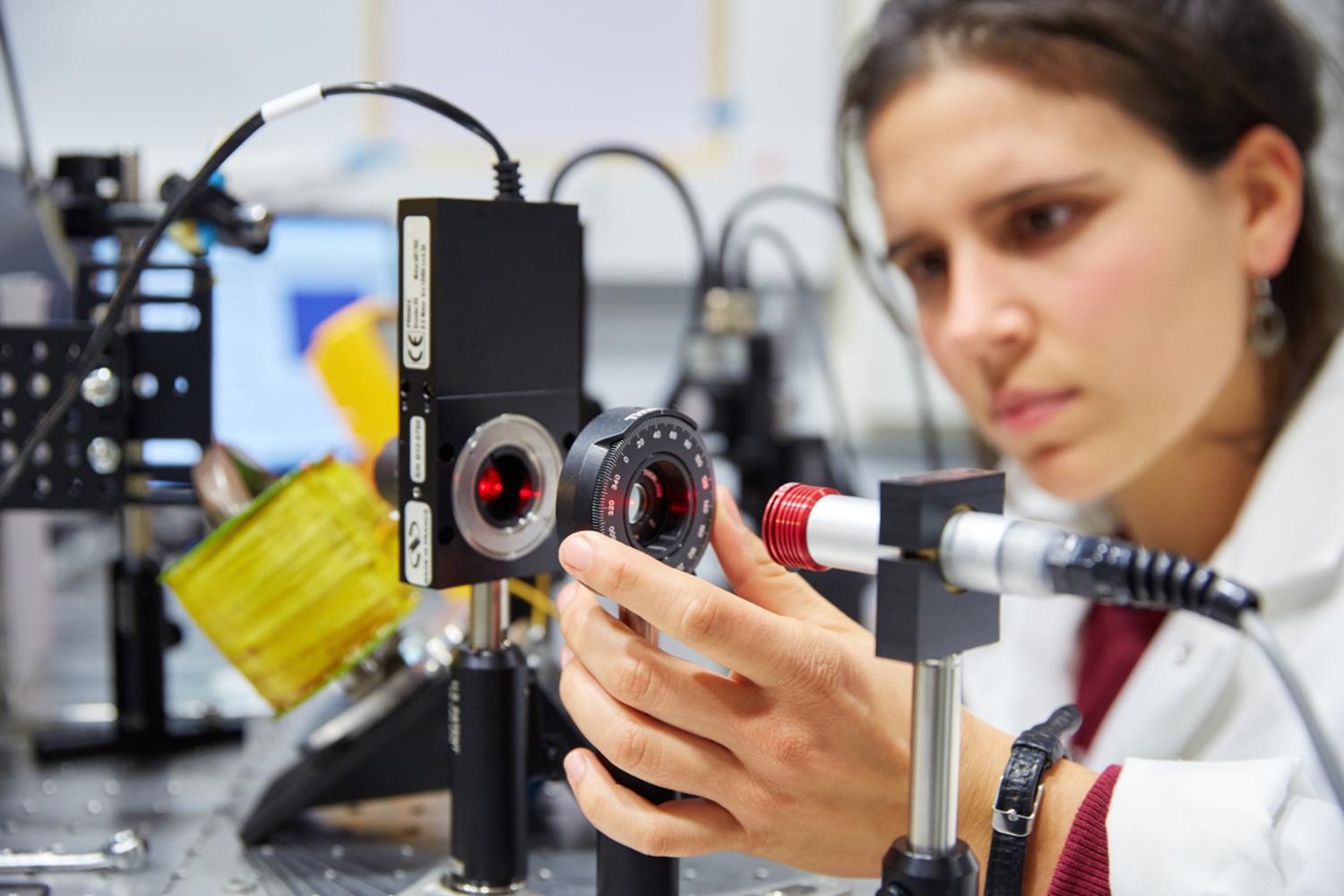
The Scholarships will be of a total amount of 3,000€. This amount is for the whole period and will not be compatible with any other grant or funding awarded for the same purpose. Candidates have to be pre-registered and accepted at the above mentioned Master degrees in order to be eligible for these grants. Interested candidates can find all the information about the offered master projects and the application process following this link.
Besides the grants, nanoGUNE offers Master students coming from any official Master degree the possibility to develop their Master Thesis within one of its research groups.
CIC nanoGUNE launches new spin-off with technology for safer childbirth
This disruptive technology arose out of a need identified in daily clinical practice by medical professionals in Osakidetza (the Basque Health System) and who are linked to its Health Research Institute, IIS Biogipuzkoa; it led to collaboration with nanoGUNE and seeks to achieve a solution to improve the monitoring of babies' vital signs –including perinatal asphyxia or lack of oxygen– during childbirth.
New biomedical diagnostic tools based on nanoengineering

“In collaboration with clinical partners, new diagnostic tools are to be developed, particularly for widespread diseases, as for example cardiovascular diseases, cancer or neurodegenerative diseases” explained Andreas Seifert, head of nanoGUNE´s Nanoengineering Group. He has more than 15 years experience in optical and biomedical engineering. With his former group at the University of Freiburg, Germany, Dr. Seifert was working on implantable sensor systems, novel miniaturized multi-modality probes and diagnostic tools for minimally invasive surgery. Based on this knowledge, the research lines at nanoGUNE will proceed in these fields to open new diagnostic and therapeutic opportunities. “These novel microsystems, based on nanotechnology, will open new diagnostic chances as, for example, continuous long-term monitoring of cardiovascular high-risk patients in daily routine realized by smart implants; improvement of early detection of cancer without exhausting biopsy by detection of exosomes - which are biological nanoparticles - in body liquids; or tissue differentiation in narrow body channels by means of optical microprobes integrated in flexible endoscopic devices” added Seifert.
One of the lines of research that Seifert wants to extend at nanoGUNE is focusing in the field of exosomes which are cell-derived vesicles with dimensions of some tens of nanometers. “Since exosomes carry a signature of the cell of their origin, and they migrate through the body and can be found in any body liquid, reliable detection of exosomes exhibits a huge potential to improve cancer diagnosing, infectious diseases and degenerative diseases of the nervous system” said Seifert. So, in collaboration with clinical partners and biomedical research centers, new optical detection methods for exosomes are aimed to be developed.
Optics laboratory
The Nanoengineering group is preparing an optics laboratory with high-end optical metrology and fabrication services for solid as well as soft matter. The innovation of new devices and methods to be developed is based on micro and nanotechnology with tiny structures down to nanometer dimensions (one millionth of a millimeter). For analyzing these ultra-small microstructures a new interferometric 3D optical profiler has been purchased that perfectly complements the structural and morphological investigations by atomic force microscopy, available at nanoGUNE. This optical profiler is able to image small areas of the sample under test with a resolution on atomic level.
The laboratory will be also equipped with a new microscope. Transparent samples, cells in liquids or many other biological samples cannot be properly resolved by optical methods because the color or light absorbance is almost the same for all constituents, and hence, there is no contrast difference between different particles or cells and their environment. In many cases, such samples have to be stained to enhance contrast or visibility. This new microscope allows to analyze low-contrast samples without staining.
Andreas Seifert
Andreas Seifert is an Ikerbasque Research Professor and leads nanoGUNE´s Nanoengineering Group. He studied Physics and received his PhD on electron beam-induced emission of X-rays from the University of Freiburg, Germany. From 1998 to 2007, he had been working in optical industry at Carl Zeiss, Germany, the leading company in high-end optics worldwide. He managed different projects in EUV (extreme ultraviolet) lithography and was responsible for scientific optical components, as synchrotron and space optics. From 2007 to 2015, he was group leader in the Department of Microsystems Engineering at the University of Freiburg. His research lines covered optical and biomedical microsystems with a focus on cardiovascular monitoring and tissue differentiation.
CIC nanoGUNE
The nanoGUNE Nanoscience Cooperative Research Center (CIC), located in Donostia-San Sebastian, Basque Country, is a research center set up with the mission to conduct excellent research in nanoscience and nanotechnology with the aim of increasing the Basque Country’s business competitiveness and economic growth. www.nanogune.eu

